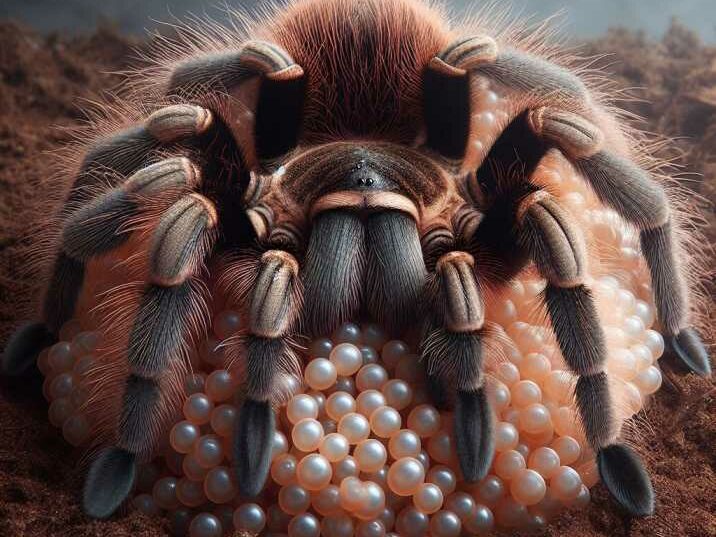Introduction:
Table of Contents
Tarantulas, with their eight legs and fearsome appearance, have long been subjects of fascination and curiosity. Among the many questions surrounding these arachnids, one common query stands out: Can tarantulas make webs? In this comprehensive guide, we delve into this intriguing question and explore seven fascinating facts about tarantulas, shedding light on their behavior, habitats, and more.

Facts About Can Tarantulas Make Webs?
Fact 1: Tarantulas and Their Webs Contrary to popular belief, most tarantulas do not spin webs for catching prey. Instead, they are rely on other hunting techniques such as ambush or pursuit. However, some species, like the Arizona Blonde Tarantula, do create silk retreats or burrows. These silk structures serve as shelter rather than trapping mechanisms.
Fact 2: Web-Spinning Tarantulas While the majority of tarantulas do not build webs, there are exceptions. Certain species, like the Goliath Bird-Eating Spider, are known for constructing elaborate webs. These webs are typically used to create shelters or capture prey. However, such tarantulas are the exception rather than the rule.
Fact 3: Silk Production in Tarantulas All tarantulas possess silk-producing glands, located in the abdomen. These glands produce silk, which the tarantula can manipulate for various purposes. From constructing retreats to lining their burrows, silk plays a crucial role in the life of a tarantula, regardless of whether they spin webs.
Fact 4: Tarantulas as Predators Tarantulas are skilled predators, relying on their keen senses to hunt prey. They possess specialized mouthparts called chelicerae, equipped with venom glands for subduing their prey. While web-spinning is not their primary hunting method, tarantulas are efficient hunters nonetheless.
Fact 5: Habitat Diversity Tarantulas inhabit a wide range of habitats, from deserts to rainforests. Their adaptability allows them to thrive in diverse environments across the globe. Whether underground in burrows or hidden among foliage, tarantulas have adapted to their surroundings, utilizing their silk-producing abilities as needed.
Fact 6: Communication through Silk In addition to its functional uses, silk also serves as a means of communication for tarantulas. Males often leave silk trails as they search for mates, allowing them to track their movements. Additionally, female tarantulas may lay down silk trails to signal their receptiveness to mating.
Fact 7: Tarantula Reproduction Tarantulas undergo a fascinating reproductive process, which may involve intricate courtship rituals. Males may create special silk mats or perform elaborate dances to attract females. After mating, females may produce egg sacs, which they protect until the spiderlings hatch.
Conclusion:
In conclusion, Can tarantulas make webs? while most tarantulas do not spin webs in the traditional sense, they are nonetheless fascinating creatures with a variety of behaviors and adaptations. From their use of silk for shelter and communication to their diverse hunting techniques, tarantulas continue to captivate researchers and enthusiasts alike.
FAQs (Frequently Asked Questions):
- Can all tarantulas make webs?
- No, while some tarantula species are known for spinning webs, the majority rely on other hunting techniques such as ambush or pursuit.
- What is the purpose of silk in tarantulas?
- Silk produced by tarantulas serves various purposes, including constructing retreats, lining burrows, and communicating with potential mates.
- Do tarantulas use silk to catch prey?
- While some tarantula species construct webs to capture prey, most rely on other methods such as ambush hunting or pursuing their prey.
- Are tarantulas dangerous to humans?
- While tarantulas possess venom, they are generally not considered dangerous to humans. Their bites may cause discomfort but are rarely life-threatening.
- How do tarantulas communicate with each other?
- Tarantulas communicate through various means, including silk trails left by males to attract mates and signals given by females to indicate receptiveness to mating.
